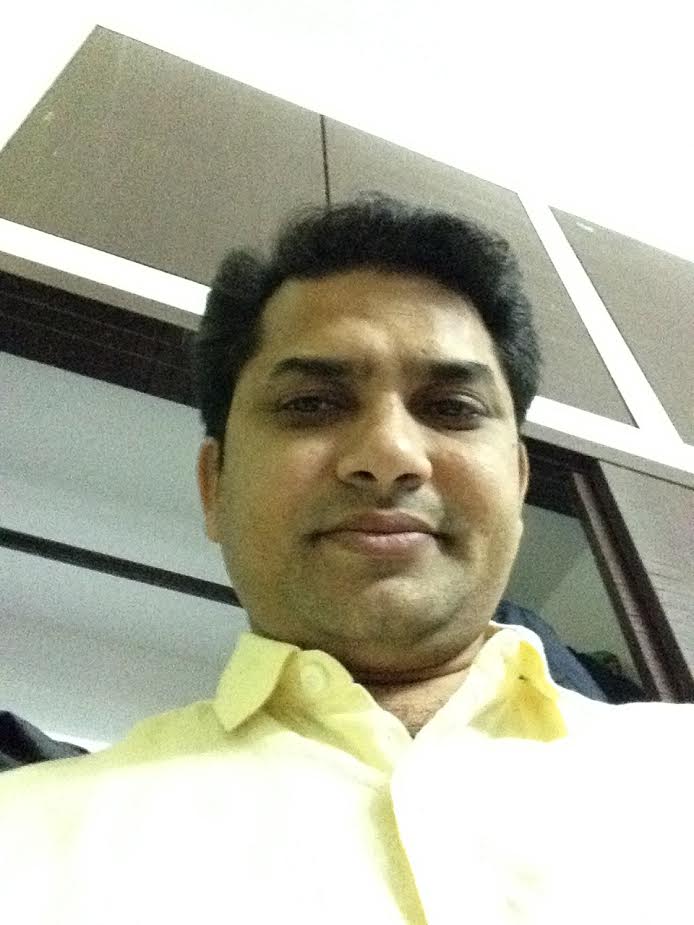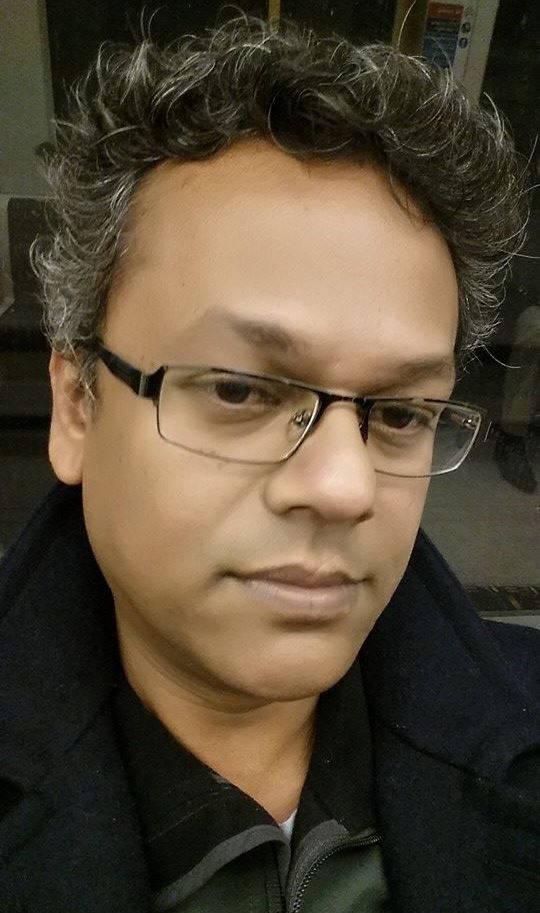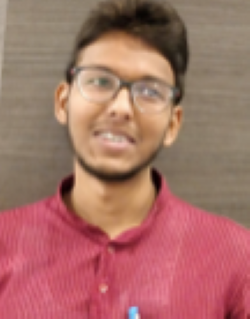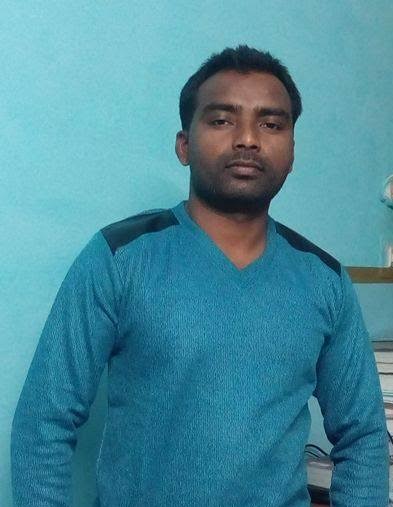Rajunayak Vislavath
 Let me begin with a story about demonetisation that affected a tribal woman Sukli in a village called Bhatu Pally, a small adivasi hamlet in Warangal District, Telangana. It is situated nearly 100 kilometers away from the old district headquarters and nearly 25 kilometres away from the newly formed district called Jaya Shankar Zilla (Bhupal Pally). She is an agricultural labourer who goes to work early in the morning. Her work is mostly in the paddy fields and on the vegetable farm. Sometimes, she goes to the forest to collect Mova fruit, firewood, and betel leaves. She also takes care of her house and the education of her children. People in the house depend on her. Unfortunately, on November 27th, 2016, when she was in the field, she was bitten, she could not make out whether it was a snake or an insect. She took it very casually and continued her work but after some time she started feeling drowsy.
Let me begin with a story about demonetisation that affected a tribal woman Sukli in a village called Bhatu Pally, a small adivasi hamlet in Warangal District, Telangana. It is situated nearly 100 kilometers away from the old district headquarters and nearly 25 kilometres away from the newly formed district called Jaya Shankar Zilla (Bhupal Pally). She is an agricultural labourer who goes to work early in the morning. Her work is mostly in the paddy fields and on the vegetable farm. Sometimes, she goes to the forest to collect Mova fruit, firewood, and betel leaves. She also takes care of her house and the education of her children. People in the house depend on her. Unfortunately, on November 27th, 2016, when she was in the field, she was bitten, she could not make out whether it was a snake or an insect. She took it very casually and continued her work but after some time she started feeling drowsy.
Then she realised that it was not an insect but a snake. She tried to find out what it could be and went near that place with a stick in her hand. When she removed the grass, she found a different type of snake hiding under the grass. She got scared and was unable to talk. There was nobody with her. She thought something was going to happen to her. She started walking towards her home. With great difficulty, she reached home. She was not able to talk properly. She waved her hands and tried to call her husband who was tilling the land near her house. With great difficulty, she explained to him what had happened to her. He looked at her and saw that her body was swelling. He got scared and tried to apply turmeric on the snakebite marks. Then he ran to inform the elders of the community. Some elders came running to her and told her husband that a snake had bitten her. Experienced in forest life, the adivasi villagers easily found the name of the snake. They said it was a Mannuthenmanjariguna snake. They tried to apply some forest medicine to no avail. She felt terrible and her body swelled more and more. Using forest medicine, by this time, it should have been cured. Instead, her condition worsened. Somebody suggested that she should be taken to the hospital.
Then the actual problem arose. The entire Adivasi village was running out of money due to demonetisation. They asked several people for help; all of them gave the same answer: “We do not have money.” Then they called her brother who works as a teacher in the tribal residential school to seek some financial support from him, but he too said the same: “I have no money for the last two weeks. I do not have a single rupee in my hand. I am somehow managing my home without money.” With a trembling tone, he said, “Please get her to the hospital. I will try to manage. He said this in great pain. His mind was full of thoughts. He was thinking: ‘If something happens to her, what would be the plight of her children?’ She has two daughters and one son and none had finished high school yet. He did not sleep and kept calling his brother-in-law with no response from them. They were saying: “We are coming to you so you can take us to the hospital but we’re waiting for a vehicle.” Imagine being 25 kilometres away from the district headquarters and having no transport facilities or ATMs. Even after repeated calls from her brother, they did not take her to the hospital because they did not get any vehicle to reach the mandal headquarters which was nearest to the village.
The brother, waiting for them near the hospital, could not sleep. He looked at the wall clock hanging in the hospital. It was three in the morning and he felt more fearful. He could not stop his emotions; finally, he went to the village on a two-wheeler and brought her to the hospital. After he admitted her in the hospital, he scoured all his sources for money and asked several people, but the answer he got was: “I have money in the account but there is no money in the bank or in the ATM.” He requested other adivasi friends in the village to help but all of them were in the same situation. They were running their homes without money. Luckily, nothing happened to the woman who was discharged from the hospital after seven days. However, her leg was still severely swollen and she was unable to attend to her daily work to sustain her family. This is one incident. There are hundreds of such stories and incidents in adivasi hamlets in the wake of the sudden and unthinking move of demonetisation. Most of these stories have not been reported in the print media or in electronic media. Most such incidents do not even reach the decision-makers or move them to consider the implications of this move for adivasi people.
Many adivasi villages are geographically isolated. Many villages do not even have proper roads to reach the mandal headquarters. In this situation, how could a cashless economy work in adivasi areas? It is important to discuss how many banks and ATMs we have in rural India.
There are many articles written by intellectuals, bureaucrats, and political leaders on demonetisation. Those articles are published in various papers and on social media. In those articles, you hardly find anything related to the most vulnerable situations of the adivasi community after demonetisation. Adivasis are most seriously affected by demonetisation. Many have still not exchanged whatever little amount they saved in mud pots and under their blankets. It may be a very little amount but for them it is a big amount. However, nobody paid attention to the adivasi situation, especially not the state. People may question why this article focuses only on adivasis? Everybody is affected. Yes, everybody is affected, but the socio-political and geographical conditions are vastly different.
Let’s take the example of Mahamutharam and Mahadevpur mandals in Jayashankar Zilla (Bhupalpally) in the newly formed state of Telangana. Mahamutharam mandal has twelve Gram Panchayats and fifty-two villages. The total population of the Mahamutharam mandal is twenty-eight thousand. Mahamutharam Mandal has only two banks: Telangana Gramina Bank, and Co-operative Bank. There is no ATM in this mandal. Mahamutharam is a tribal-populated mandal. To deposit or to withdraw, twelve Gram Panchayat people have to come to Mahamutharam. Out of twenty-eight thousand people, only one percent has account in the bank. After the Jana Dhan call, most people with zero rupees opened accounts and their accounts still have a zero balance today. All the eleven, Gram Panchayat people have to walk to Mahamutharam to use any kind of bank transactions. They have to walk or take other means of transportation to reach the bank, which takes hours.
Coming to Mahadevpur Mandal, the total population of the mandal is thirty thousand, eighteen Gram Panchayats. In this mandal, there are three banks: Union Bank, Telangana Gramina Bank, and Co-operative Bank. This mandal does not have a single ATM. To reach these banks, adivasis have to walk 100 km. Some of them have two-wheelers. Even with two-wheelers, it takes seven to eight hours. By the time they reach the banks, they will be closed. Therefore, adivasis never depended on the banks except for their government schemes but their day-to-day functioning is without any bank transactions so far. Now the problem is they exchanged whatever little money they saved for two thousand-rupee notes, which are cumbersome for the day-to-day life of adivasis. There are no big malls or markets to exchange their two thousand rupee notes. Once they buy one-kilo oil (one of the larger transactions), it will serve them a month; however, most of their transactions are not so huge and do not require trips to the bank, leaving adivasis with an abundance of large, practically unusable bills.
The country recently witnessed the economic condition of the adivasi. Walking along with his daughter, a husband carried his wife’s dead body on his shoulders in Orissa. A father carries his daughter’s dead body because he did not have enough money to hire a vehicle to take her to hospital for proper treatment. This situation reminds me of a book called The Absolute True Diary of A Part-Time Indian where a young boy had a grim conversation with his father. “He’s suffering,” Dad said. “We have to help him”. “You can’t do it!” I shouted… So I heard the boom of my father’s rifle when he shot my best friend. A bullet only costs about two cents and anybody can afford that.” Sheman Alexie (9-12) In this book, the author narrates the Native American economic condition. A native father kills his son because he didn’t have enough money to take him to the hospital.
The teacher, because of his lived experience got scared, worried and confused what would be the plight of his sister’s children if something went wrong with his sister. All these incidents proved and are currently the proving the dire socio-economic conditions of Adivasis. Instead of addressing economically deprived people of the country, our honourable prime minister reads a poem in the house of parliament. It goes like this:
“Kissi ke waaste raahein kahan badalti hain;
tum apne aap ko khud hi badal sako to chalo
Sabhi hain bheed main; tum bhi nikal sako to chalo.
Yahan kisi ko koi raasta nahin deta;
Mujhe girakay agar tum sambhal sako to chalo.
Yahi hai zindagi, kuchh khwab, kuchh chand ummeedain;
Inhi khilonon se tum bhi bahal sako to chalo.”
This translates as:
“Paths don’t change their course for anybody;
If you can change yourself, and walk along with others, you walk.
Everybody is in the crowd, if you are able to walk with them, you walk
Nobody gives way to another here, if after tripping me, if you can steady yourself, you walk
This is all that life is about – a few dreams, a few wishes,
And if you want to amuse yourself with these toys, please do.”
The prime minister said the culture of Indian political conduct was such that no one makes way for anyone else, and added that he doesn’t mind being criticized if that helps the opposition to tread a corrective path. Upon delivering a final literary blow, the prime minster’s voice diminished in the loud beating of the desks his fellow party members used to demonstrate their support.
As a responsible person of the country, he should not say “if you’re not able to walk along, then die.” How does the poor adivasi in this country express her voice when it is drowned out by the mainstream? The poem implies that if you are not able to make it, you die. How can a nation advocate we disregard the people who are not able to make it? It is able person’s responsibility to take the disabled along with them to the shore. The new policies always systematically keep Adivasis away from opportunities.
Honorable Prime Minister Modi asked the people to walk along on his path towards development. How can one walk when she does not have sufficient energy in her body? To provide any sort of support, one needs the state and its mechanisms to provide equal opportunities to all. In fact, special focus could be given to the needy, particularly, adivasis because they live in remote places. In this given situation, how applicable is the prime minister’s poem?
The adivasi situation is a struggle of being in between two worlds. Adivasis are unable to take apart the fragments of their identity and make it into a comprehensive whole. Adivasis lose their connection to their country and then fail to reconcile that with the dominant society. This happens because of the new policies which the state brings such as demonetisation, which force people to follow without leaving any choice for them even as they do not have the means to do so.
The colonial state used certain strategies to confine nomadic people and various other communities in India to their needs. Similarly, demonetisation confines the country to the cashless, plastic economy which tribals have nothing to do with. In the first week of demonetisation, people highly praised the government decision. Many nationalist, right-wing ideologues used the corporatised media to praise Modi and his decision. They sent messages to known and unknown people, most of which were forwarded to others and then forwarded again. The state made use of the emotions of the people and they called it “The end of Black Money”, leading people to believe black money would come to an end and they would lead a happy life after fifty days. Before the scheme even began, so-called nationalists pretended to know much about black money. Very few people started thinking about demonetization and its effect on people; few worried how the decision would affect poor people which form the majority in India and who have nothing to do with black money.
They fail to understand the “Other.” Adivasis live great distances away from mandal (administrative) headquarters. Most of them do not even have bank accounts (which they couldn’t access even if they had accounts as they did not have ATMs near their hamlets). Whatever money they had with them to exchange for new rupee notes wasn’t worth the trek to the bank to exchange. They tried exchanging their old notes with nearby villages but by the time they reached the banks, they were closed. Some of them stayed overnight to deposit but still very few could deposit in their accounts. Many of them thought they could deposit till December 30, 2016, but the government unexpectedly came up with more shocking news that money could only be exchanged till November 24, 2016.
Many adivasis did not get the news, rendering the money they keenly saved in small pots and under their blankets useless. Who would go to RBI branches to exchange their money, when after the exchange, it wouldn’t be enough for their bus fares? Many adivasis either lost their money or did not get what demonetisation promised them.
The poem read by our honorable Prime Minister in the House of Parliament addresses the present political aim of the country. After he finished reciting the poem, honorable members of the house clapped and cheered him on. The happiness of leaders shows more of their understanding of their powerful constituents but not of the needy in the country. The elected members limit their access exclusively to the established rich, and their kith and kin. They do worry about the economically downtrodden adivasis, dalits, but only when the next elections come. They are limited to only the rhythm and narrative style of the poem but not to the actual content. One would understand the poem if one closely and critically engages with it.
The last thing a people that has faced much adversity and hardship in the colonial and post-colonial periods needed was another government policy exhibiting the tyranny of the minority at the expense of the subjugated majority. Demonetisation is yet another policy that drains the life out of the adivasis just as the trees and rivers in their land are devoid of vitality thanks to the violence of ‘development’. The mountains and rocks are destroyed and the deer and bears see no life. All the above-mentioned have already been taken away from them and demonetisation is another deadly blow. The governments of the present and past have repeatedly lied and fooled adivasis and the poor in the country. Adivasis are victims to the destroyer’s logic, in the processes of political wish fulfillment which only knows how to extract from them. Their final destruction means nothing to the corporate and money-crazy logic of the state.
~
References
Bhukya, Bhangya. Subjugated Nomads: The Lambadas under the Rule of Nizams. New Delhi: Orient Black Swan, 2010. Print.
“‘Delinquent Subject’: Dacoity and the Creation of a Surveillance Society in Hyderabad State.” The Indian Economic and Social History Review. New Delhi: Sage 44, 2, 2007. Print. pp. 179-212.
“Articulating Self Orality, Community, and Colonialism in South India” Indigeneity: Culture and Representation. ed. G.N. Devy, Geoffrey V. Davis and K.K. Chakravarthy. New Delhi: Orient Blackswan, 2009. Print
Sheman Alexie, The Absolute True Diary of A Part-Time Indian, Little Brown and Compony, New York, 2007.
Xaxa, Virginius. State, Society, and Tribes: Issues in Post-Colonial India. New Delhi: Pearson Longman, 2008. Print.
~~~
Rajunayak is an Assistant Professor in Indian and World Literatures Department at English and Foriegn Languages University Hyderabad, India. Presently, he is a Post-Doctoral visiting scholar at University of California, Berkeley, USA.










